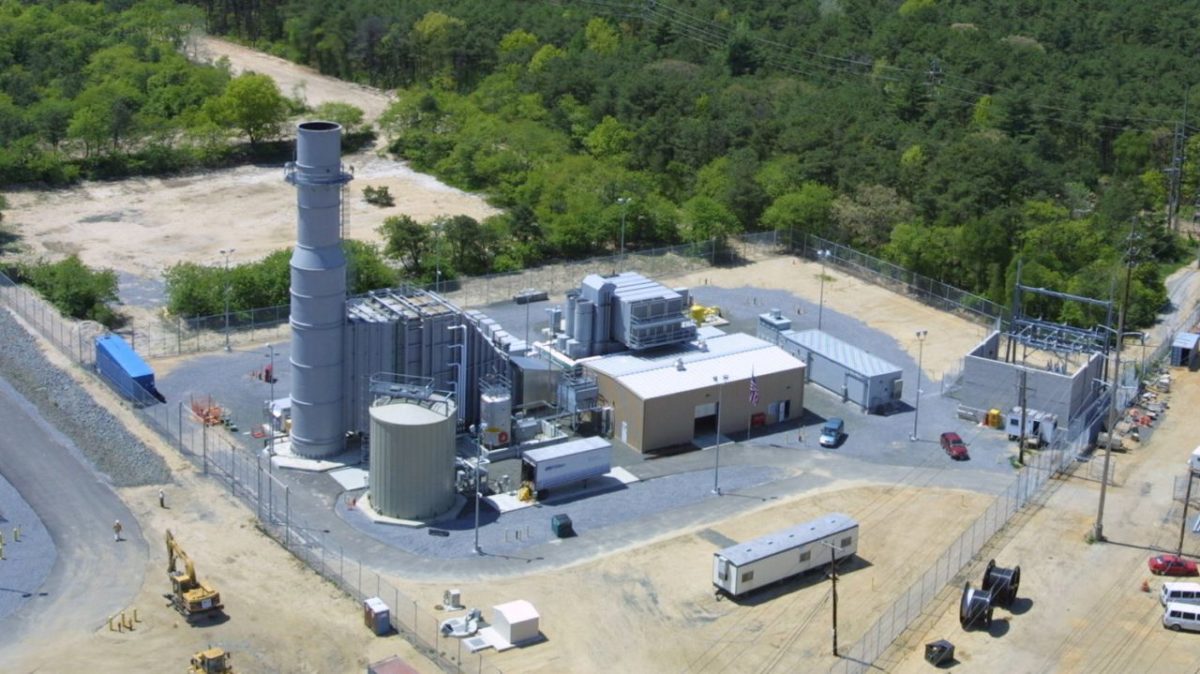A 47 MW gas-fired power plant near New York City will be the site of an $8.5 million demonstration project to test the viability of substituting renewable hydrogen for a portion of the fossil fuel combusted at the plant.
The New York Power Authority, along with the Electric Power Research Institute, General Electric, and hydrogen supplier Airgas, will test the concept at the Brentwood Power Station on Long Island. The test will start with a blend of about 5% green hydrogen and increase to around 30%. Hydrogen in amounts greater than 30% would likely require equipment retrofits at the plant.
The project team will evaluate different concentrations of hydrogen blended with natural gas at regular intervals. They also will assess the blend’s effect on reducing greenhouse gas emissions and its overall system and environmental impacts, including nitrogen oxide emissions. The project will begin in fall 2021 and is expected to last six to eight weeks. The plant consists of a GE LM-6000 combustion turbine and was commissioned in 2001.
NYPA will lead the project with help from EPRI, GE, Sargent & Lundy, Airgas, and Fresh Meadow Power. EPRI will assist with the project design and technical evaluation. As the gas turbine original equipment manufacturer, GE will supply a hydrogen/natural gas blending system and support the project’s planning and execution. Sargent & Lundy, acting as the engineer of record for the project, will provide overall engineering and safety reviews. Airgas will supply renewable hydrogen, and Fresh Meadow Power will provide piping system design, material procurement, and installation services.
SCE launches EV charging program
Southern California Edison launched its $436 million Charge Ready program, which is intended to add around 38,000 new electric car chargers throughout the utility’s service area over the next five years.
As part of the program, SCE will install and maintain the supporting EV charging infrastructure while site hosts, who are non-residential SCE customers, will own, operate, and maintain the charging stations.
The Charge Ready program set a target to locate half of the chargers in state-designated disadvantaged communities, or economically-impacted communities that suffer most from the negative effects of air pollution.
SCE launched a program last year for larger trucks, buses, and off-road industrial equipment called Charge Ready Transport, which aims to add charging to support at least 8,490 medium- and heavy-duty EVs over a five-year period. The $356 million program was modeled after an earlier Charge Ready pilot program
Ohio adds a hurdle for renewable project developers
Ohio Gov. Mike DeWine signed Senate Bill 52 into law on July 12. The bill allows county commissioners to reject particular details of solar and wind projects, ban the projects entirely, or carve out portions of the county where those facilities may not be built.
The law takes effect in 90 days and requires project developers to notify county commissioners and trustees at least 90 days before filing with the state’s Power Siting Board. The bill also adds a commissioner and trustee to the siting board while it reviews the local project.
The bill had support from two northern Ohio counties where a wind development was the subject of local opposition. The APEX Clean Energy project ultimately was rejected by the siting board.
Cummins tests hydrogen-fueled ICE
Cummins Inc. said it began testing a hydrogen-fueled internal combustion engine. The proof-of-concept test may potentially expand the technology options available and aligns with what Cummins said are its existing capabilities in hydrogen fuel cell, battery electric, and renewable natural gas powertrains.
Following proof-of-concept testing, the company plans to evaluate the engine in a variety of on- and off-highway applications.
The hydrogen engines can use green hydrogen fuel, produced by Cummins-manufactured electrolyzers, emitting near-zero CO2 emissions through the tailpipe and near-zero levels of NOx.
The engine maker said the high energy density of hydrogen enables on-board gas storage without compromising either vehicle payload or operating range. It said its joint venture partnership with hydrogen storage company NPROXX adds the ability to integrate the fuel cell or hydrogen engine with the high-pressure gas cylinder tanks and supply lines on the vehicle.
This content is protected by copyright and may not be reused. If you want to cooperate with us and would like to reuse some of our content, please contact: editors@pv-magazine.com.









By submitting this form you agree to pv magazine using your data for the purposes of publishing your comment.
Your personal data will only be disclosed or otherwise transmitted to third parties for the purposes of spam filtering or if this is necessary for technical maintenance of the website. Any other transfer to third parties will not take place unless this is justified on the basis of applicable data protection regulations or if pv magazine is legally obliged to do so.
You may revoke this consent at any time with effect for the future, in which case your personal data will be deleted immediately. Otherwise, your data will be deleted if pv magazine has processed your request or the purpose of data storage is fulfilled.
Further information on data privacy can be found in our Data Protection Policy.